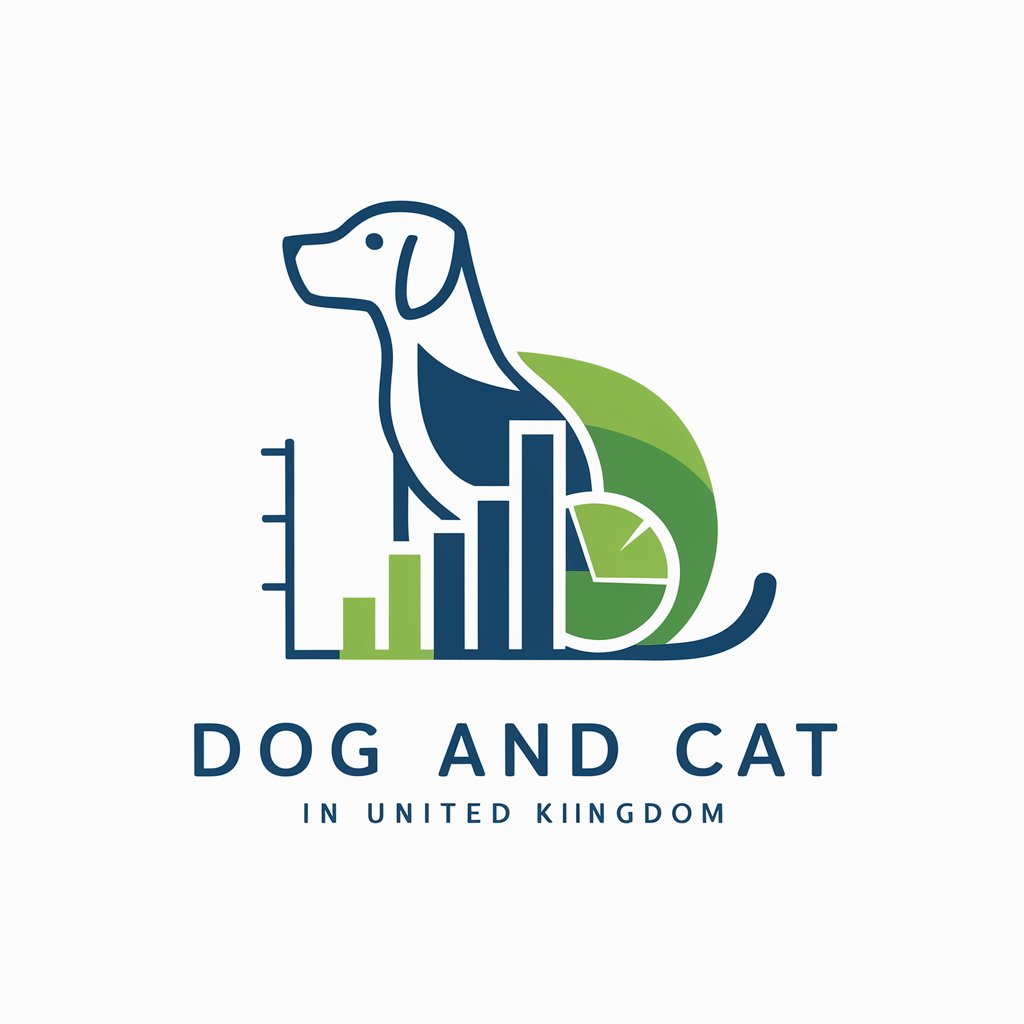UK Dog & Cat Analysis - UK Pet Population Analysis

Welcome! Let's dive into UK dog and cat population data.
Power your pet research with AI
Analyze the latest trends in cat populations across the UK and identify key regions with the highest densities.
Compare the dog and cat populations in urban versus rural areas within the UK.
Provide insights into the growth of dog populations in specific postcode districts over the past five years.
Evaluate the factors contributing to higher cat populations in certain regions of the UK.
Get Embed Code
Introduction to UK Dog & Cat Analysis
UK Dog & Cat Analysis is a specialized data analysis service focused on examining the populations of dogs and cats across the United Kingdom. This service utilizes datasets provided by users, particularly those detailing pet densities and distributions by postcode districts. The primary goal is to offer insights into trends, perform comparisons, and deliver detailed reports and visual data representations to enhance understanding of pet demographics. An example scenario might involve a local government authority wanting to understand the pet population in their region to plan for animal control resources efficiently. Powered by ChatGPT-4o。

Core Functions of UK Dog & Cat Analysis
Data Visualization
Example
Generating interactive maps showing dog and cat densities in various UK districts.
Scenario
A pet supply company uses these maps to decide where to open new stores based on high pet densities.
Trend Analysis
Example
Analyzing yearly changes in pet populations to predict future trends.
Scenario
Veterinary services use this analysis to forecast demand for vaccinations and other health services.
Comparative Analysis
Example
Comparing cat and dog populations across different regions to identify which pet is more popular in specific areas.
Scenario
A marketing firm specializing in pet products uses this information to tailor advertising campaigns to specific regions based on the predominant pet type.
Geographical Distribution Analysis
Example
Identifying regions with unusually high or low pet densities and investigating potential causes.
Scenario
Animal welfare organizations may use this information to target areas that may need more support services or rescue operations.
Who Benefits from UK Dog & Cat Analysis?
Local Government Bodies
These users can leverage pet population data to make informed decisions about urban planning, animal control policies, and community health programs.
Pet Industry Businesses
Businesses such as pet stores, veterinary clinics, and pet insurance companies can find valuable market insights to optimize their services and outreach.
Academic Researchers
Researchers studying urban ecology, public health, or social sciences can use detailed pet population data for their studies and publications.
Non-profit Animal Welfare Organizations
These groups can use the data to better allocate resources, plan rescue operations, and design awareness campaigns effectively.

How to Use UK Dog & Cat Analysis
Step 1
Visit yeschat.ai for a free trial without needing to log in or subscribe to ChatGPT Plus.
Step 2
Upload your dataset related to dog or cat populations in the UK, including details such as postcode districts and animal density.
Step 3
Select specific analysis criteria like trends, comparisons, or predictions based on the data provided.
Step 4
Utilize the visual tools available to generate graphs or maps that represent the analyzed data effectively.
Step 5
Review the generated reports and visualizations to gain insights and make informed decisions or recommendations.
Try other advanced and practical GPTs
Global Population Expert
Unlocking Population Insights with AI

ShockJock
Unleash bold AI-powered conversations

Shoresy
Your AI sidekick with attitude

Ragey McSwearington
Astrological insights with an attitude

St. John Chrysostom
Divine insights at your command

YEP
Empower Youth with AI-Driven Learning

❤️ P.U.R.P.O.S.E. ❤️ ®™©
Discover Your Path, Empower Your Life

Career Pathfinding Assistant
Navigate Your Career Path with AI

Guide Pathfinder
AI-powered Pathfinding Expertise

statespaceEXPLORER
Navigating Complex Spaces with AI

Sosh
Empowering Your Social Media with AI

/
AI-Powered Versatile Command Center.

Detailed Q&A About UK Dog & Cat Analysis
What types of data can I analyze with UK Dog & Cat Analysis?
You can analyze data related to dog and cat populations by postcode district in the UK, focusing on aspects such as population density, growth trends, and distribution patterns.
Can UK Dog & Cat Analysis predict future trends in pet populations?
Yes, the tool can model future trends based on historical data, using statistical methods to predict changes in dog and cat populations over time.
How does this tool help in academic research?
Academics can use this tool to perform detailed demographic studies, understand pet distribution, and correlate this data with socio-economic factors, enhancing their research with empirical insights.
Is there a way to compare data between different regions?
Absolutely, the tool allows for comparative analysis between different postcode districts, offering insights into regional variations and trends in pet populations.
What file formats are supported for data uploads?
The tool supports common data formats such as CSV and Excel, allowing for easy upload and integration of your data sets.
